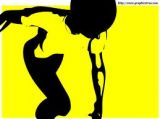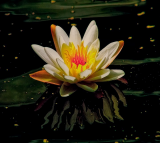- Forum
- General Discussion | Introductions | Off Topic Forum
- Photography General Discussion
- Difference between a digital IR camera and film IR camera?
Difference between a digital IR camera and film IR camera?
-
 Topic Author
Topic Author
- Jacob1977
- Lone Wolf
-
- Nikon D90 and D200
- Followers: 13
- Posts: 170
-
Points:
307
-

- effron
- Newbie
- Followers: 1623
-
Points:
129640
-

- Baydream
- Moderator
-
- Canoni/60D/70D/5DmkIII
- Followers: 388
- Posts: 11185
-
Points:
7278
Post #41340
www.opticsgeek.com/
Might be a good way to start.
Shoot, learn and share. It will make you a better photographer.
fineartamerica.com/profiles/john-g-schickler.html?tab=artwork
-
 Topic Author
Topic Author
- Jacob1977
- Lone Wolf
-
- Nikon D90 and D200
- Followers: 13
- Posts: 170
-
Points:
307
Post #41410
Baydream wrote: This place sells a Canon P&S converted to IR for $200.
www.opticsgeek.com/
Might be a good way to start.
Thanks for the tip, any chance you know of anyone that sells out of box IR Nikon's?
-

- effron
- Newbie
- Followers: 1623
-
Points:
129640
Post #41417
www.lifepixel.com/
Why so serious?
-

- robbie
- Apprentice
-
- D200,665nm D200,720NM D70,D7000
- Followers: 72
- Posts: 2768
-
Points:
25
Post #47532
Processing film is very time consuming,getting a perfect exposure is a nice dream whereas with digital shooting Raw it`s very easy.Printing will be another task I wouldn`t want to face,doing test strips,dodging and burning but if you send the negs out to a pro lab printing will be very expensive.
Processing digital images is very easy once you know what to do.Uploading your files to an on-line printer is commonplace as opposed to scanning your film negs to upload.
Costwise a 4gb card costs about $20 and you can shoot forever whereas a roll of film will run you about $15[just a guess] for a 24 exposure b/w or color[your choice].Color Ir film calls for a lab process
if you can find one to do it,the one hour labs won`t touch it!
I used to shoot film Ir,b/w and color but digital is so much easier.
Hope this helps.
-

- Henry Peach
- Apprentice
-
- I currently use a 5DII or Sony Nex-3 most of the time.
- Followers: 50
- Posts: 2925
-
Points:
16
Post #47886
With my IR converted Canon 20D I get a 790nm filter, which is nicer than a #25, and I'm happily using ISOs up to 1600. Even that high the noise is pretty tame compared to IR film. And Photoshop makes all sorts of processing options a breeze.
I like IR because it's freaky and fun, and I usually find hand held photography more fun than using a tripod. So for me digital IR (a converted camera) has been a lot better than film IR.
On the other hand 35mm film SLRs are dirt cheap these days. It would be fairly cheap and easy to try IR film out.
-

- Graflex 4x5
- Lone Wolf
-
- Nikon D300
- Followers: 4
- Posts: 178
-
Points:
0
Post #47909
FYI: if you're having trouble with over saturated reds, your sensor's IR filter may be a bit lacking. B+W makes a good IR stop filter.
No matter how fast I go, there's always someone slower in front of me.
-

- robbie
- Apprentice
-
- D200,665nm D200,720NM D70,D7000
- Followers: 72
- Posts: 2768
-
Points:
25
Post #47922
with the filter on,in Photoshop your image will be red but in some raw converter and using the 'eye dropper' you can select the custom WB by clicking anywhere in the image and the red will disappear.My 665nm D200 cannot set a 'custom WB' because that feature wasn`t built in the camera but a 'preset WB' was set by the man who converted it.The D200 with a filter on the lens is terrible for Ir,very noisy.Hotspot is another problem encountered,it`s lens related so if you are thinking of trying Ir
make sure your lens doesn`t give hotspots.
Most of the lower level Nikons are great for ir with the D70 the king,the Pro level Nikons are not good Ir cameras because they are built for visible light with a strong Ir blocking filter.
You will see the term 'channel swap' and wonder what`s the significance....It will cause the sky to turn blue and the vegetation white most of the time.
This is the 'channel swap' for Photoshop..
image/adjustment/channel mixture...
output channel....red 100 change to 0.......blue 0 change to 100 [don`t click,just select blue channel
output channel...red.....0 change to 100 blue 100 change to 0...click ok.
I used an 'action' which is...duplicate the image,auto levels.channel swap.
Auto levels will give your image more contrast and tonal range but be careful of blown highlights.
From there you can use plugins or play around in photoshop for more colors.
This is my Ir home.......
irphotocom.proboards.com/index.cgi ?
Feel free to browse.
- Forum
- General Discussion | Introductions | Off Topic Forum
- Photography General Discussion
- Difference between a digital IR camera and film IR camera?
Latest Reviews
The Canon EOS R100 is an entry-level mirrorless camera introduced in 2023. But just because it’s an entry-level camera doesn’t mean it’s a bare-bones camera. Find out why in this review!
Nikon’s retro-looking Nikon Zfc is anything but retro. Under its classic body is a host of features and amenities that make it a worthwhile compact mirrorless camera for 2024.
The Canon EOS R50 is one of the newest R-system cameras from Canon. Is it worth your money? Find out all the details you need to know in this comprehensive review.
The Sony FE 70-200mm f/2.8 GM OSS II is Sony’s flagship mirrorless zoom lens. As such, it’s loaded with features and has a top-shelf build quality that makes it a top pick!
Latest Articles
Using leading lines in photography helps improve the composition by drawing viewers in and leading their eye from the foreground to the background. Explore some fine examples of this in this guide!
The Insta360 has one of the best lineups of action cams and 360-degree cameras. With these Insta360 accessories, you can elevate your photography and videography game!
Creating impactful photos of landscapes depends on many factors, not the least of which is your talent behind the lens. This guide explores other elements required for the best product.
The Canon EOS R100 is an entry-level mirrorless camera introduced in 2023. But just because it’s an entry-level camera doesn’t mean it’s a bare-bones camera. Find out why in this review!
Are you ready to upgrade your camera? Before buying new, you might consider the value of purchasing used gear to save money.
The Olympus OM-D E-M10 Mark IV is a micro four thirds camera released in 2020. It’s an entry-level system along with the OM-D E-M5 Mark III. Use this guide to determine which one is best for you!
Blue hour photography might not be as well known as golden hour photography, but it is every bit as good a time to create epic images of landscapes. Learn how in this quick tutorial!
Nikon’s retro-looking Nikon Zfc is anything but retro. Under its classic body is a host of features and amenities that make it a worthwhile compact mirrorless camera for 2024.














